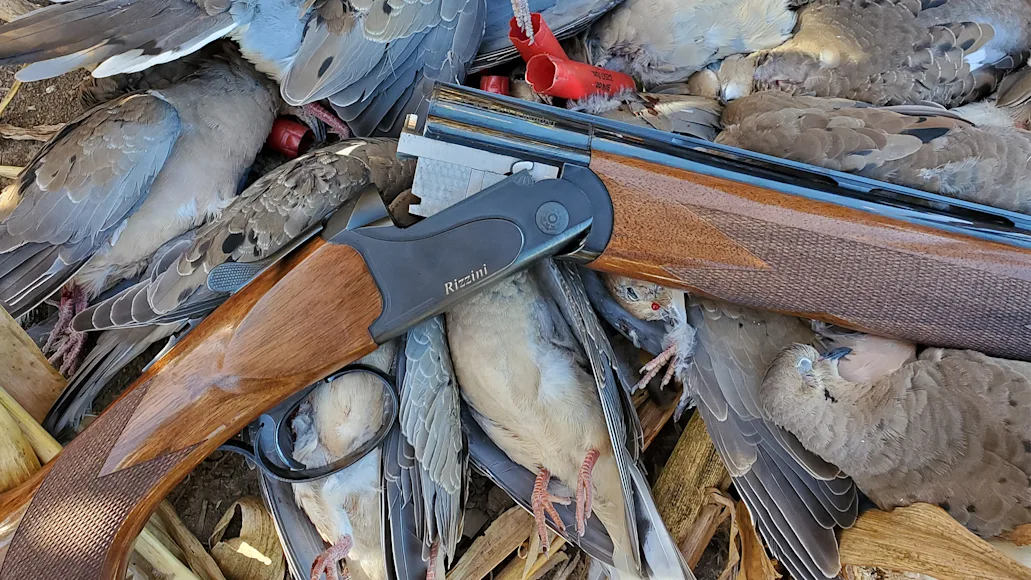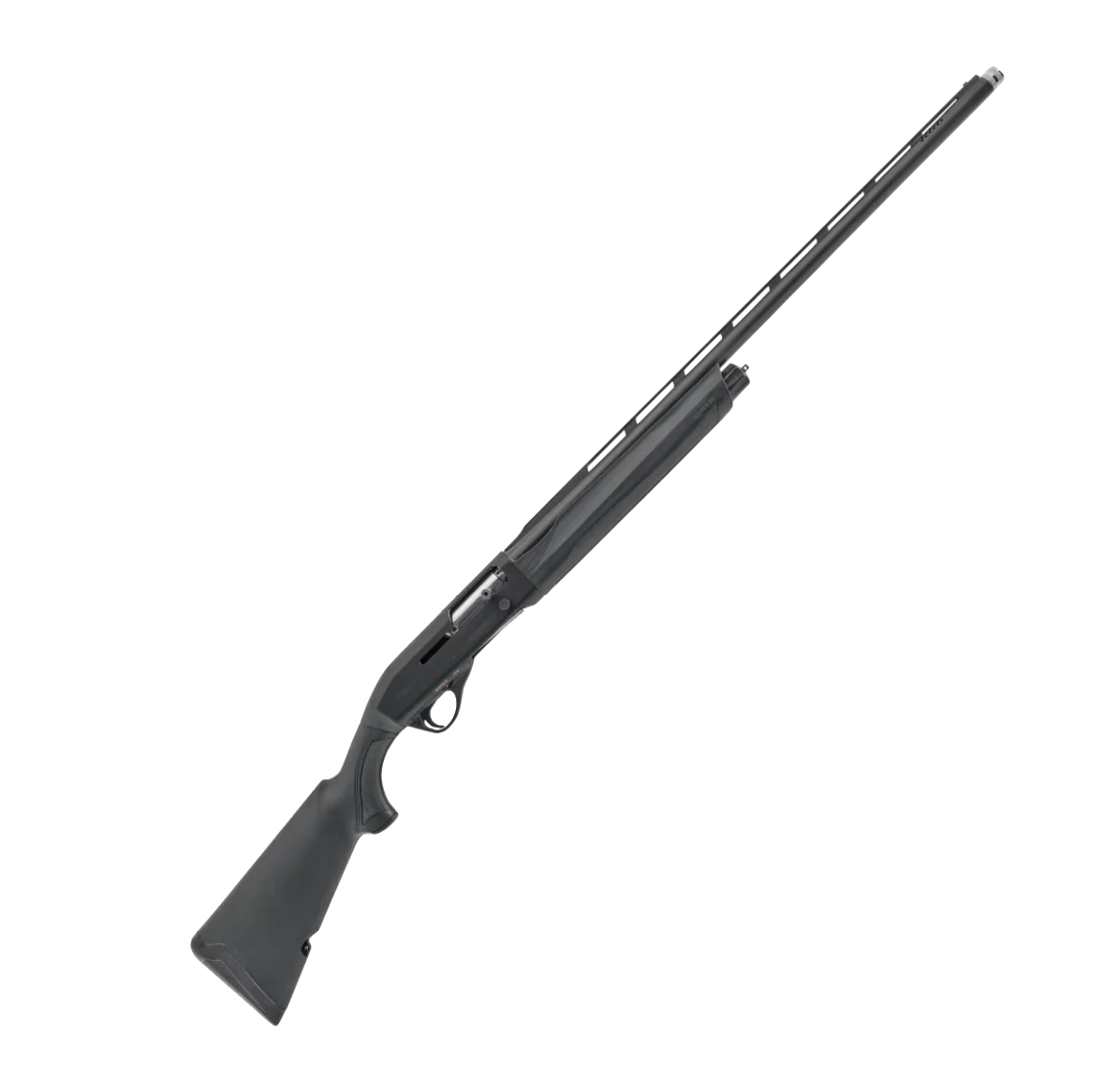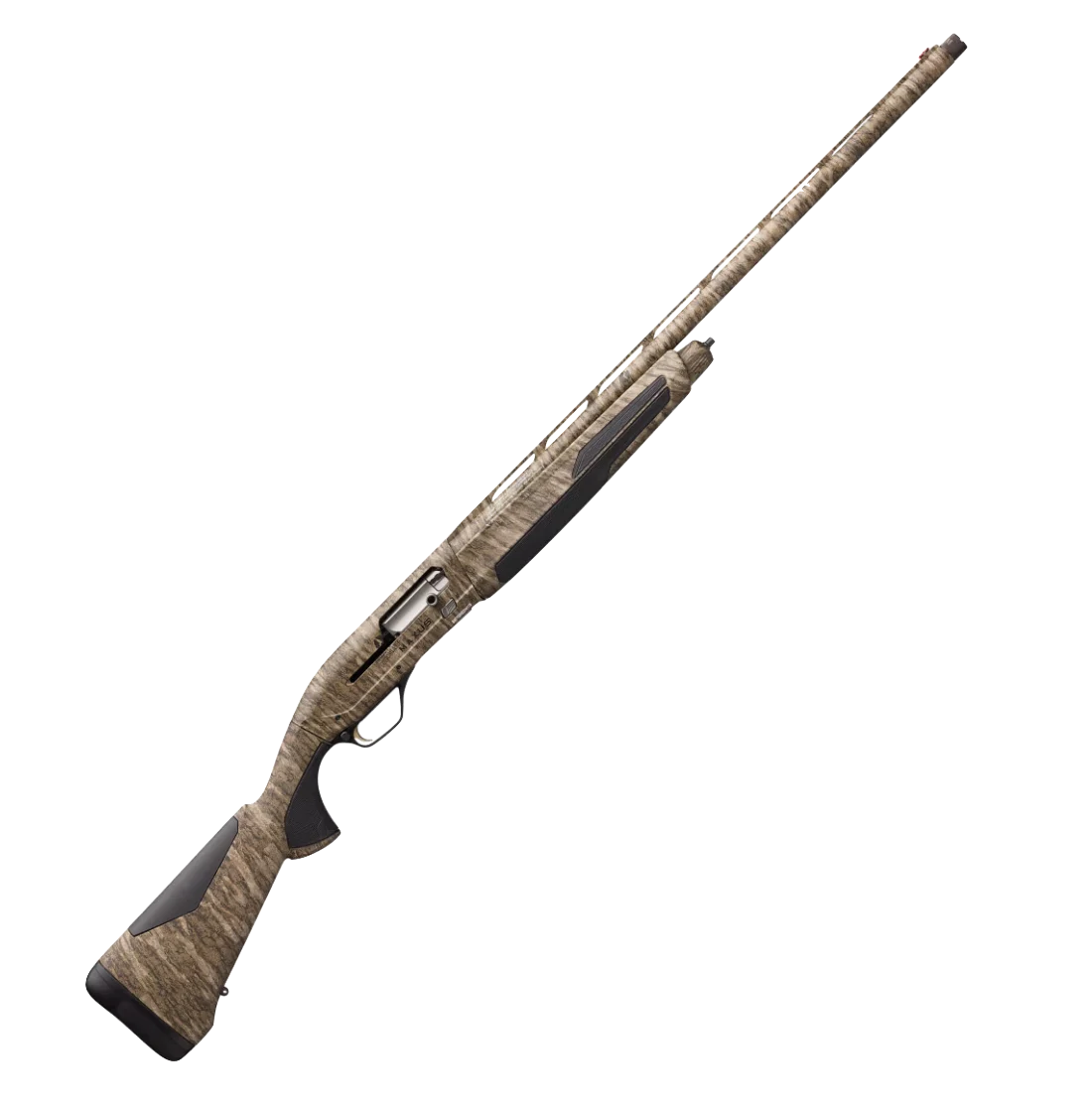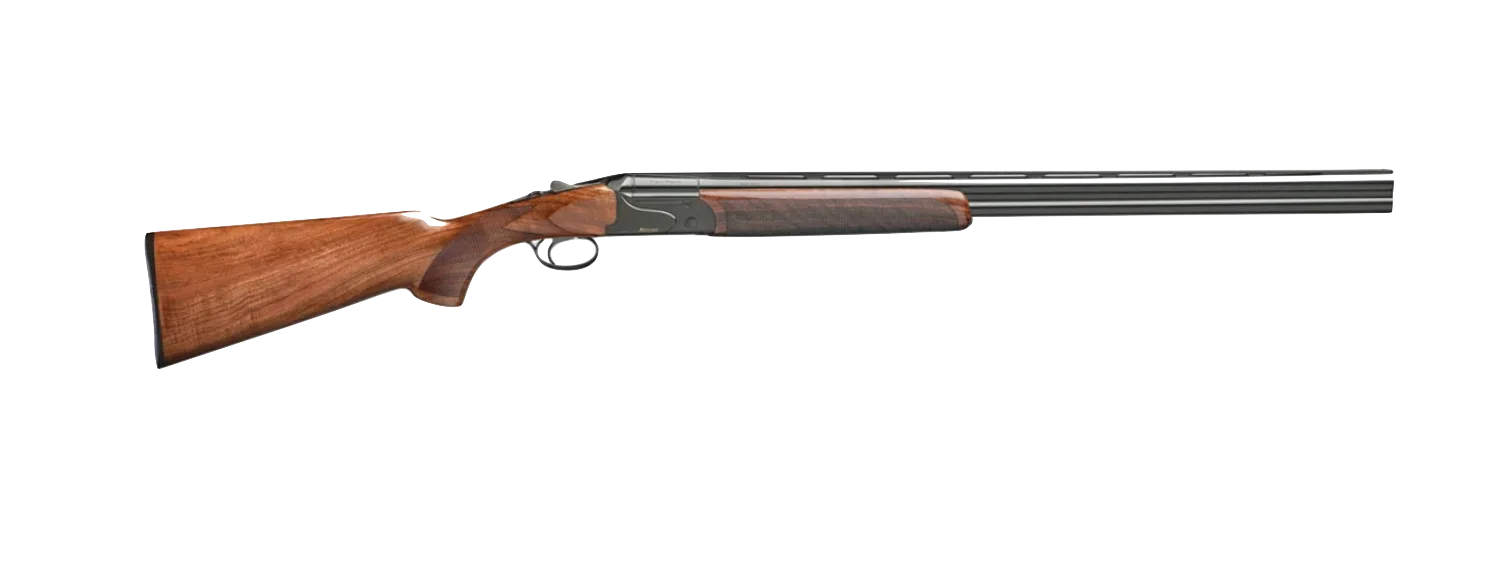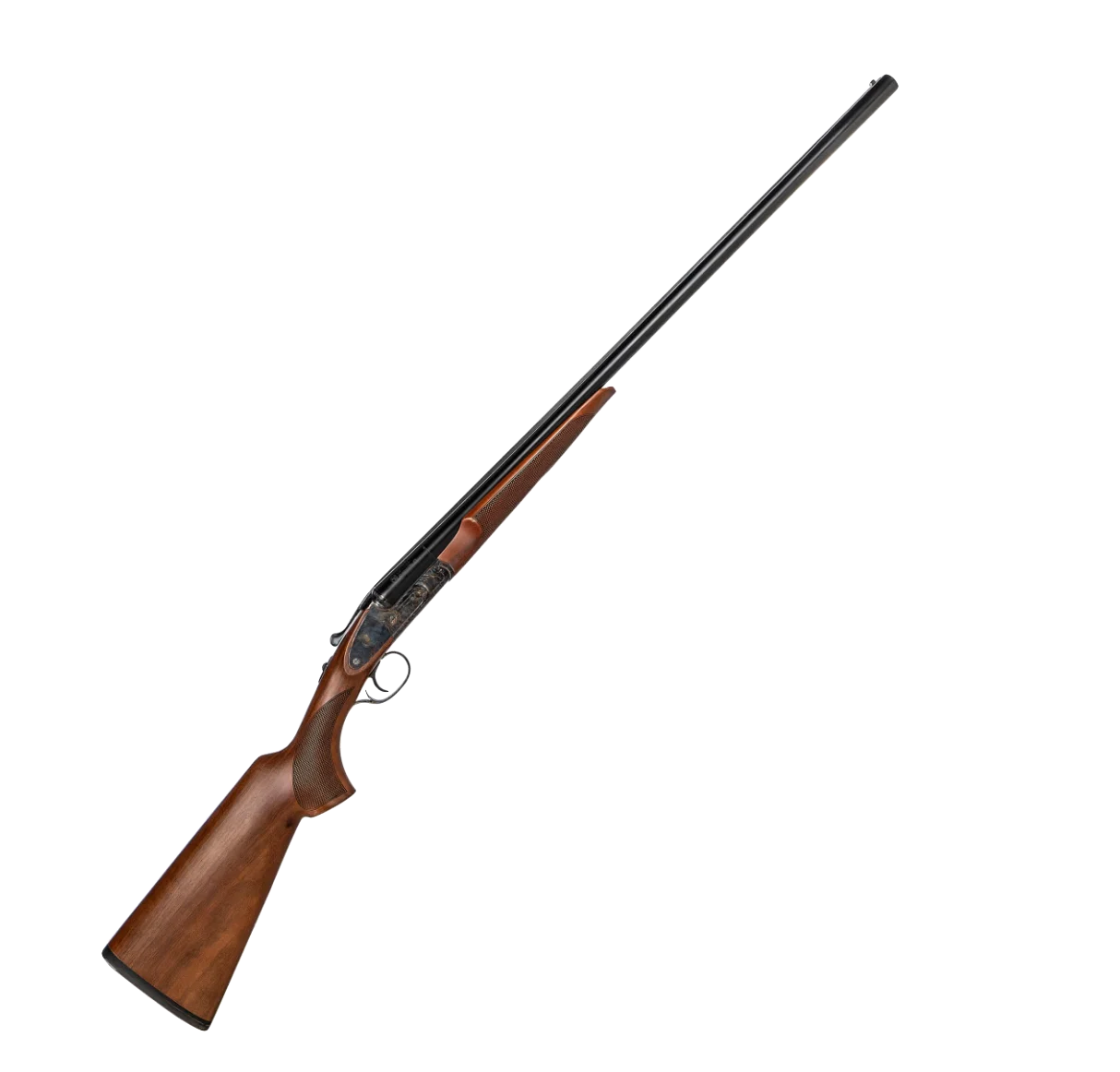_We may earn revenue from the products available on this page and participate in affiliate programs. Learn more ›
_
Part of the fun of dove hunting is that you can shoot any gun you like. You can take more than one to the field, if you want to. If you want to shoot grandad’s gun, or the single-shot .410 you started with, you absolutely can.
If you’re interested in a limit of doves, though, you’ll be a little pickier about what you shoot. Doves are tricky birds to hit, and equipping yourself with the right gun makes the hitting easier. I know this well, because when my home state of Iowa finally started holding dove seasons a dozen years ago, I didn’t pick a gun for fun. I was playing catch-up for all those years I missed, and I wanted the most efficient dove gun possible. I shot the 12-gauge Beretta 391 I used for ducks and geese, and it’s hard to imagine a much better choice. I’ve had a chance to cool off, and now I allow myself to shoot some other guns besides my duck gun. My views on dove shotguns have broadened since then, but only so much. Some are still clearly better than others—and the 10 guns below, in my opinion, are the best on the market right now.
The 10 Best Dove Guns for 2024
Benelli Performance Shop Ethos Cordoba A.I. BE S.T.
Pros
BE S.T. finish protects metal corrosion and abrasion
Good weight and balance
“Advanced Impact” gives you some ballistic edge
Easy Locking bolt means no lost opportunities through misfire
Cons
Expensive
Stout magazine spring and latch mean stiff loading
Price: $3649

Named for Argentina’s high-volume dove capital, this feature-rich new inertia gun is more than up to the task of filling a 15-bird stateside limit. The Ethos Cordoba comes in 3-inch 12-gauge with a 28-inch barrel. Benelli’s shock-absorbing ComforTech stock helps dampen recoil, and the Easy-Locking bolt eliminates any chance of the out-of-battery misfires inertia guns are prone to suffer.
The gun’s highest-tech features are the BE S.T. finish, which is highly corrosion and abrasion resistant and, while not 100% necessary in the dove field, makes this a gun you can take on to the duck marsh later in the season. Benelli’s Advanced Impact barrel profile wrings a bit of extra velocity out of shotshells and patterns very well. I found the gun to be very easy to shoot at clays once I used the included shims to adjust the stock to my liking. Is this more dove gun that most of us need? Yes, probably, but when has this been about need?
Related: Read a full review of Benelli Performance Shop Ethos Cordoba A.I. BE S.T. here.
Franchi Affinity 3 Sport Trap
Pros:
Good balance for trap and waterfowl/doves
Enlarged controls
Good trigger
Cons:
Stiff shell latch
Light for targets (but a good weight for hunting)
Price: $999
This new-for-2024 inertia semiauto from Franchi combines range and field features into one 12-gauge semiauto that you can take from the trap field to the dove field. The Sport Trap has several features people like in a hunting gun: a 3-inch chamber (you’ll want this later when duck season starts), a synthetic stock, and swivel studs. It also has a 30-inch barrel with a stepped rib, a fiber-optic sight and extended choke tubes, and it’s ported to reduce muzzle jump. The gun has Franchi’s effective TSA recoil pad and enlarged bolt hand and bolt release, all of which come in handy both on the range and in the field. The trigger breaks cleanly at 5 ½ pounds, which is a plus for hunting and target shooting. The gun has a weight-forward balance that makes it feel a bit awkward when you pick it up but feels great when you actually swing it at a target.
Beretta A300 Ultima Field
Pros:
Based on one of the greatest semiautos ever, the Beretta 391
Reliable
Maple and Cerakote have a handsome, unique look
Cons:
Safety in front of trigger guard may be hard for those with shorter fingers
Maple/Cerakote version doesn’t yet come in 20-gauge yet, although synthetic-stocked 20s are available
Price: $1399
About 15 years ago Beretta introduced the new A400, moved production of its predecessor, the 391, to the US, and began making it as a budget gun called the A300 Outlander. While its technology may be older, the 391 was regarded by many as the best Beretta semiauto ever, and the A300 is practically the same gun with less-expensive fit and finish and a gas piston that’s easier to clean. The 391, by the way, is one of the few guns rugged and reliable enough to be kept in South American dove lodges for customers who may shoot well over a thousand rounds a day.
New for 2024, Beretta offers a 28-inch, 12-gauge version with bronze Cerakote metal and a handsome maple stock with upgraded checkering. The gun has enlarged controls and swivel studs in case you need to hike to the field, and it will look good and shoot good when you get there.
Winchester SX4
Pros:
Enlarged safety and bolt-release button make this gun easy to handle in the field
Easy to clean
Soft shooting
Comes in 12-gauge, 20-gauge fullsize and compact models, also a true left-handed 12-gauge
Cons:
Fit and finish not as good as previous SX models
Price: Starting at $889
The SX4 is soft-shooting, versatile, reliable, and affordable: what’s not to like about the it?The latest in Winchester’s Super X line, the X4 features the same time-tested gas system of the X2 and X3, and adds some enlarged controls, all at a lower price. Its gas operation combines with a very soft Inflex recoil pad to make the X4 easy on your shoulder. The guns come with shims and length spacers so you can tinker with the stock fit, and it has the overbored Browning barrel and long Invector Plus choke tubes to throw patterns too dense for a dove to fly through.
The SX4 is also a very simple gun to maintain. It has three gas-system parts: a piston, a buffer tube, and a spring that you have to clean only occasionally. The X4’s lower price does come at the expense of fit, finish, and a few more plastic parts, but it remains a durable, reliable workhorse of a gun. I’ve shot the X2, X3, and X4 (the X1 was an entirely different gun) and while I may not like the X4’s cosmetics the best, there’s no arguing that it’s a shooter. And there’s an X4 to fit almost anyone. A short-stocked compact model comes in 24 or 26-inch barrel lengths, and there’s a new, mirror-image left-handed version as well.
Browning Maxus II
Pros
Soft comb reduces felt recoil
Synthetic stock designed to be cut down; also includes shims and spacers
Excellent trigger
Cons
Doesn’t come in 20-gauge
Price: $1729
The Browning Maxus II semiauto is one of the best gas guns around. Based on the already successful Maxus, the Maxus II did away with the one annoying feature of the original Maxus, the forend latch, which has been replaced by a standard magazine cap.
The redesigned stock includes a parallel section at the butt that makes it easy to cut it to fit shorter shooters while still allowing the use of the original recoil pad. Spacers and shims included with the gun allow further fit adjustment. It has an enlarged bolt handle and release button, as well as a milled-out loading port to make it easier to load and unload in the dove field, and the stock has rubber grip inserts, the better to hold onto with sweaty hands in the heat of September 1.
A new soft comb insert works in concert with the gas system and Inflex recoil pad to make the Maxus II a very soft-kicking gun. I was able to shoot a couple of cases of target loads through the Maxus II last year, and I hunted teal with it, too, and the gun ran perfectly for me. It shot flat to the point of aim, and I found it very easy to hit with.
Rizzini BR110 Field
Pros
Comes in all gauges and barrel lengths
Gauges built on proportionally scaled frames
Cons
The small frame of the 28-gauge and .410 is better-suited to upland hunting than to doves
Price: $2494
For the past four years I have spent a lot of time in the dove field with a Rizzini BR 110 O/U. The 110 comes in every gauge from 12-gauge to .410 bore and 26-, 28-, or 30-inch barrels (also 32-inch, by special order) in the field versions. The gun has a matte-finished, unadorned black frame and straight-grained walnut. It’s not fancy at all in appearance, although the fit and finish of the gun is good and everything works exactly as it should. It has a single-selective trigger and manual safety and ejectors.
My gun, a 28-gauge with 30-inch barrels, weighs a shade under 6 pounds, which is really too light for doves, even with 30-inch barrels to make it swing better. The 20-gauge, built on a slightly larger frame, would be the ideal BR110 dove gun.
Browning Citori CXS
Pros
Proven design
Good weight and balance for doves
Cons
Thick, glossy finish on walnut
Price: $2,529.99
If I was going to draw up the perfect dove gun, it would look a lot like the 20-gauge Browning Citori CXS sporting-clays O/U. It’s long enough and heavy enough to shoot well without being overweight. Intended as a gun for field and target shooting, the CXS comes with target features like extended chokes, longer 28-, 30- or 32-inch barrels. With Browning’s excellent Inflex recoil pad and a weight of almost 7 ½ pounds, which is stout for a 20, it is a nearly recoilless joy to shoot, and it swings smoothly and points steadily. The stock has a right-hand palm swell that does me, as a left-hander, no good at all, and a finish that’s glossier than I would prefer, but that’s about the end of this gun’s shortcomings. The basic Citori design has been proven across over 50 years and well over a million guns by now. You can't go wrong with this gun for doves.
Mossberg Gold Reserve 20-Gauge
Pros
Good fit and finish
Light and trim
Handles well for upland hunting
Cons
Too light for target shooting
Heavy trigger
Price: $1135
Mossberg International adds a 20-gauge model to its Gold Reserve O/U lineup for 2024, and it may be the dove gun you’re looking for. The Gold Reserve is built on an entirely different action than the robust Silver Reserves. These are light, trim shotguns. My test gun weighed just 6 pounds with 30-inch barrels, and it felt to me like a gun that could do well on flighty doves, and the rubber pad has a hard top insert to help you mount the gun without snagging the butt on your t-shirt. The gun’s one mechanical flaw is the trigger pull, which scaled about 8 pounds on my gauge, but if you're like me, you don't notice trigger weight when shooting a shotgun.
It’s a good-looking gun, too, with a coin-finished frame and deep-cut engraving. The monoblock is jeweled, as well, adding to the gun’s classy looks (Did I just say a Mossberg looked classy? I did). It comes with a five extended chokes and a hard case, all for $1100. It also comes in 12-gauge and .410, but the 20 is probably the one you want for doves.
CZ Sharp-Tail
Pros
Pistol grip/beavertail configuration works well in the dove field
Great value
Cons
Extractors can slow your reloading
Price: $1099
If you’re looking for a solid dove-hunting side-by-side, the CZ Sharp-Tail delivers at an affordable price. With a pistol-grip that provides greater control, and a handfilling beavertail forend that helps keep your fingers away from hot barrels, this single-selective-trigger double-gun is a good fit for the dove field. It’s eye-catching, too, with its case-colored, engraved sideplates. The Sharp-Tail comes in 12-, 20-, and 28-gauges and .410 bore. All have choke tubes except the .410 which has fixed IC/M chokes that are right for the dove field. The gun has extractors to lift fired hulls, not ejectors to pop them out, but that’s a concession to keep the price low, and it is quite an affordable gun at $1099.
Ceasar Guerini Tempio SE Limited Edition
Pros
Great fit and finish and handsome decoration
Good configuration for dove hunting
Cons
Looking good comes at a price
Price: $5725 in 20- or 28-gauge; $8085 for two-barrel set; $11,110 for three-barrel set
Because dove hunting is a social event, and sometimes you need to dress to impress, the Caesar Guerini Tempio SE Limited Edition claims the last spot on this list. This new-for-2024 version of the company’s original shotgun comes in 20- and 28-gauges only, with 28-inch barrels. The receiver has doves and bobwhites inlaid in gold on either a coin-finished or case-colored frame, while the oil-finished walnut stock has a graceful, rounded Prince of Wales grip. Neither heavy nor light, the guns range from 6 pounds 5 ounces to 6 pounds, 10 ounces, a good heft for dove-field smallbores. The Tempio SE also comes in a 20/28 two-barreled set and, if you’re truly splurging, a 20/28/.410 three-barreled set. The Tempio, like all Caesar Guerini guns, is immaculately fit and finished, and backed by some of the best customer service in the industry.
Three Key Things to Look for In the Best Dove Guns
Gauge: I have strong opinions about the best gauge for dove guns (see below).The 12-gauge is the most efficient, hardest-hitting choice for doves, and there is absolutley nothing wrong with choosing a 12 for day in the sunflowers. The 20-gauge, though, is probably the mos popular choice. A standard 7/8 ounce load of shot (or ¾ ounce in steel) is more than enough for doves in reasonable range. In the right gun, those loads are soft-enough-shooting for almost anyone.
The 16-gauge does anything the 20 does a little bit better, but you’ll pay more for ammunition. You’ll pay more for less when you buy ammunition for the smaller 28-gauge and .410. I have done quite a bit of dove hunting with a 28-gauge, and the ¾-ounce lead or 5/8 ounce steel loads work very well, especially over decoys, and recoil is minimal. The .410’s poor patterns make it best-suited to very close-range dove shooting, say, when birds decoy perfectly, or you shoot a small waterhole.
Action Type: The most efficient dove gun is a semiautomatic. It holds three shells (doves are migratory birds, so magazine limits apply) and can be reloaded quickly and topped up while there are still shells in the gun. There is no slide to cycle, and a gas-operated semiauto has the advantage of reducing recoil, too. Inertia guns are very popular among dove hunters, as well. What they lack in recoil reduction they make up for with reliability in dirty, dusty conditions.
Pumps are fine dove guns for those who can cycle them quickly, without losing focus on the target. Personally, I can shoot pumps at waterfowl fine, but not so much at doves.
Break-action guns, both side-by-side and O/Us, offer two chokes and I like them for the simple reason that it makes it easier to collect and my empties. For many shooters, the narrow sight picture down the rib of an O/U works better for doves than the wide plane of a side-by-side gun.
Weight and Balance: While doves are small and fast, dove guns needn’t be small and fast. Some heft helps you swing smoothly and reduces recoil. Longer-barreled guns add some weight to the front end, resulting in a steadier gun that moves well. Everyone has a different idea about what constitutes good balance, but I have found that longer, heavier guns work best.
Why I Think a 12-Gauge Makes the Best Dove Gun
Any gun you enjoy shooting can be the best dove gun for you. At the same time, there’s no question that if you define the “best dove gun" as the most efficient and effective dove gun, the 12-gauge semiauto is it—hands down. Here’s why:
Four Reasons Why a 12-Gauge Semiauto Is Best for Doves
1. Ballistics
Loaded with 1 or 1 1/8 ounces of shot, a 12-gauge can take doves from close range out to 40 yards or more, especially if you shoot size 7 1/2 shot. More shot in the pattern means that the usable pattern—the part dense enough to ensure multiple hits on a bird—is wider than it would be with a lighter load from a small-gauge gun. It’s not a huge difference, a few inches at most, but you can see that difference play out in registered Skeet averages, where almost everyone scores higher with a 12 than they do with smaller gauges. Bear in mind that Skeet shooters use one gun and sub-gauge tubes for all four gauges, so the difference have to do purely with their ammunition, not with their guns. A 20 gauge comes close to a 12, but the big-bore wins.
Also, I keep reading that doves aren’t hard to knock down. It’s one of those cliches that writers repeat that makes me wonder if they are paying attention in the field. Maybe we’re not shooting the same doves, because I’ve seen lots of birds lose feathers and keep flying, or fall and magically recover and fly away. The extra pellets in a 12-gauge pattern can make a difference between a clean kill and a crippled dove.
2. Weight
Heavier, bulkier guns don’t feel as good in your hands as a trim smallbore might, but they’re easier to swing and shoot. In dove hunting, your vehicle carries the gun right to the spot (or very close), so there’s no real advantage to a lightweight shotgun. A longer, heavier gun swings more smoothly, points well, and is generally easier to shoot that a lighter gun. Heavy guns can be faster to the target, than lighter smallbores, if speed matters to you. The extra heft absorbs recoil, too.

3. Action
When I shot 12s at doves, it was almost always a semi-auto. I can’t cycle pumps smoothly and quickly enough to make good followups on juking doves, so I wanted a gun that shot every time I pulled the trigger. I prefer gas guns to inertia-operated models because of the recoil reduction of gas, which can matter if you’re shooting a lot and wearing no more padding than a t-shirt. Softer recoil lets you get back on target faster after a miss.
Any repeater beats a break-action in terms of firepower and speed of reloading. It no longer bothers me if my gun is broken open to reload and a dove comes floating in, but it used to drive me nuts. With a magazine gun, you can also quickly drop a shell into the empty port. Once in Argentina, I shot three doves out of huge flock, threw two shells into my semi-auto and shot two more before the bunch swept on out of range. My jaded bird boy actually cheered, and I was pretty impressed with myself. I never could have done that with a pump or break-action, only a semi-auto.
4. Familiarity
If you shoot the same 12-gauge semiauto at waterfowl as you do at doves, you’ll have the advantage of confidence and familiarity with your gun when you take it to the dove field. Moreover, you’ll be getting good practice for duck season. Ignore the small-gauge snobs who mock your 12 as a cannon. You’ll have plenty of time to heckle them back after you come in early with your limit.

